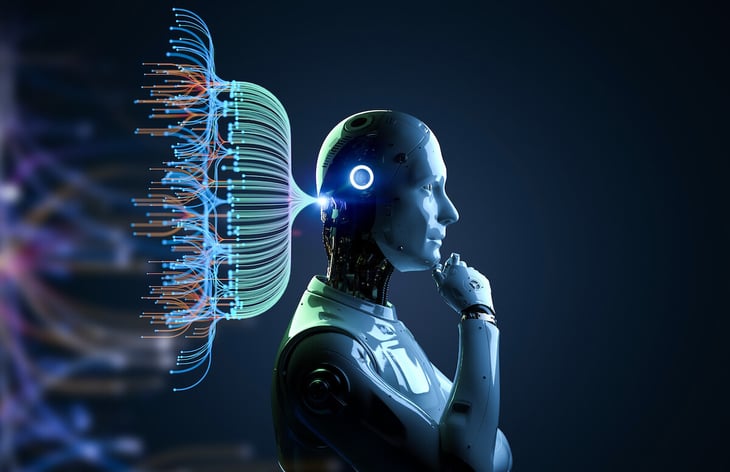
As an executive leader, you're always on the lookout for new ways to stay ahead of the curve and gain a competitive advantage. Right now, one of the most exciting and transformative technologies available is artificial intelligence (AI).
AI has been a hot topic lately, with impressive programs such as MidJourney, Stable Diffusion, and ChatGPT gaining attention. ChatGPT, a program from OpenAI, has quickly become the fastest-growing consumer app in history with an estimated 100 million monthly active users. Its ability to generate human-sounding writing in any format and style is impressive.
People are using AI products in various ways – from creating parody videos and generating lyrics to writing news copy and even doing homework.
Microsoft has invested $10 billion into OpenAI and announced an AI-powered Bing homepage, while Google is set to launch its own AI chatbot named Bard.
AI can be broken down into three big areas: artificial narrow intelligence (ANI), artificial general intelligence (AGI), and artificial super intelligence (ASI).
- ANI is focused on specific problems and is good for improving processes and efficiency.
- AGI is like the Turing test, where computers can solve more complex problems.
- ASI is beyond human comprehension and intelligence.
The median estimate for AGI is around 2040 and it’s around 2060 for ASI. The range of possible outcomes with AGI and ASI is vast.
AI is not a mysterious and complex technology, but rather a tool that can augment human capabilities and automate repetitive tasks. It has the potential to cause both positive and negative disruption in many industries. It is already embedded in our daily lives through technologies such as face recognition, predictive texts on our phones, and recommendations on our smart TVs.
AI can automate many tasks, improve customer experience, and help businesses make better decisions based on data analysis. However, it also poses risks such as job displacement, bias, and ethical concerns.
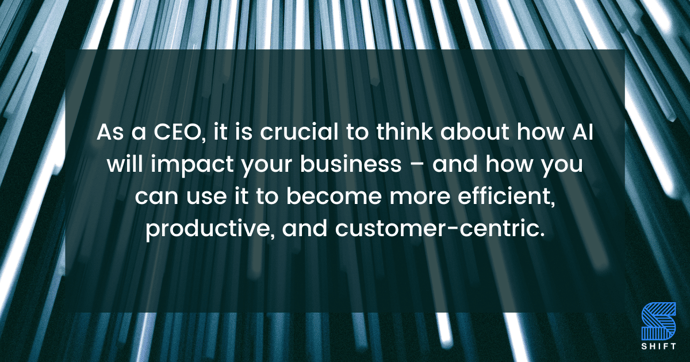
AI has the ability to find unexpected insights that can make a positive change in people's lives, but it is crucial to address the risks and ethical concerns that come with it.
From chatbots and predictive analytics to natural language processing and machine learning, AI has the potential to transform every aspect of your business from customer service and marketing to operations and finance. But with so many tools and applications out there, it can be hard to know where to start.
That's why we've put together this practical guide to help you unlock the power of AI and start taking advantage of its many benefits.
First, let's start with the basics.
What is AI?
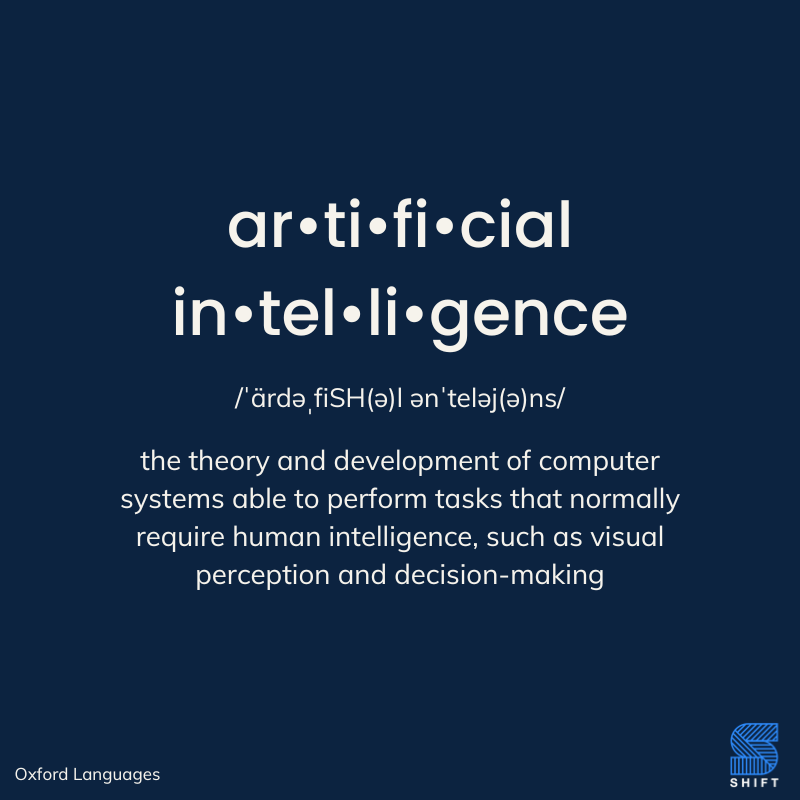
At its core, AI refers to machines that can perform tasks that normally require human intelligence, such as learning, problem-solving, and decision-making. While it may sound like something out of a sci-fi movie, AI is already all around us.
Think of voice assistants, recommendation algorithms, fraud detection systems, autonomous vehicles, and the list goes on.
How can you as an executive leader and entrepreneur incorporate AI into your daily work and business?
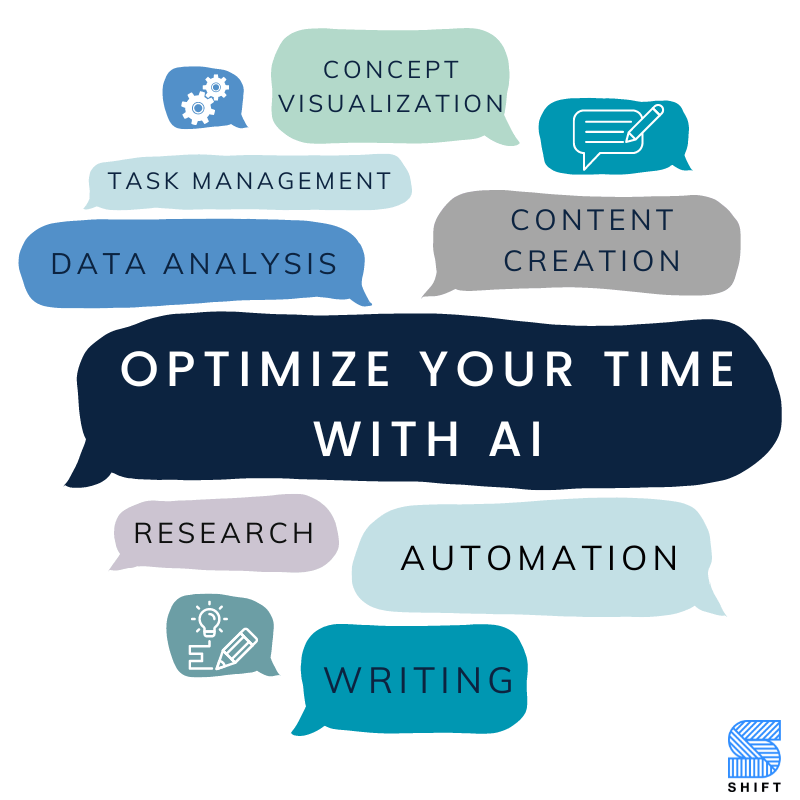
The good news is that you don't need to be a technical expert or have a huge budget to get started. There are many user-friendly AI platforms and tools available to automate repetitive tasks, improve customer experience, and provide valuable insights based on data analysis.
One great place to start is with all things writing. AI tools can act as your co-pilot or first draft partner for creative writing like copywriting, blogging, content creation, social media posts, proposal writing, video scripts, and email marketing. By using AI to handle the more mundane aspects of content creation, you can free up more time and energy to focus on the bigger picture.
With so many AI tools and applications out there, how can you know which ones to focus on?
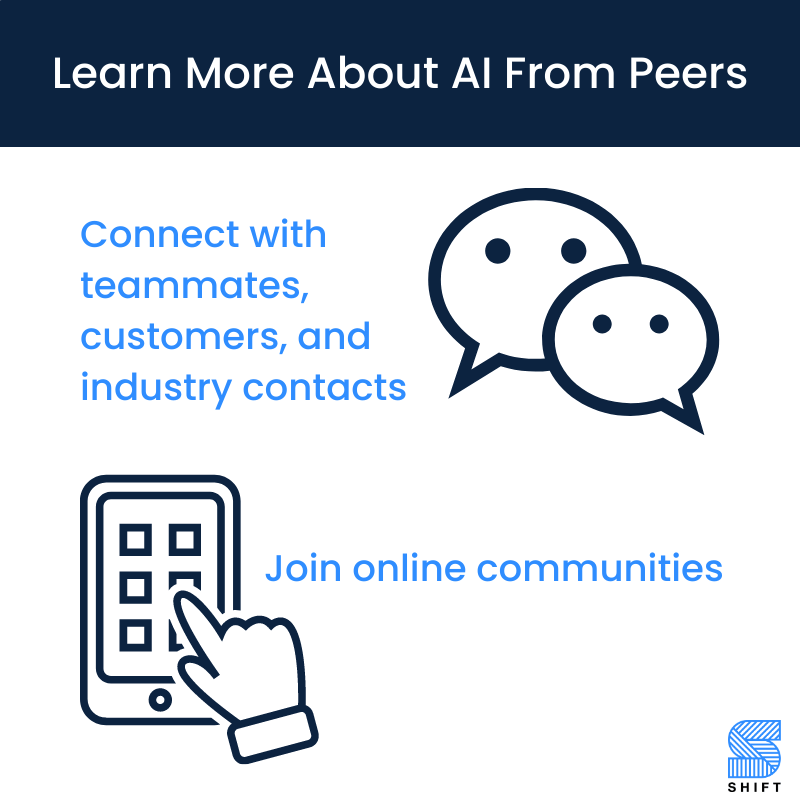
Start by joining online communities and groups where people are already leveraging AI, such as Telegram, WhatsApp chats, Facebook groups, or Slack channels. This will help you stay up-to-date on the latest developments and avoid being left behind.
Another key to success is to do your homework and research different AI applications to determine which ones will save you the most time, effort, and money.
- Talk to customers and colleagues who have firsthand experience with AI tools and see how they've benefited from them.
- Look for companies in your industry that are already using AI and learn from their successes (and failures).
How can AI help me reduce costs and increase efficiency in my business?
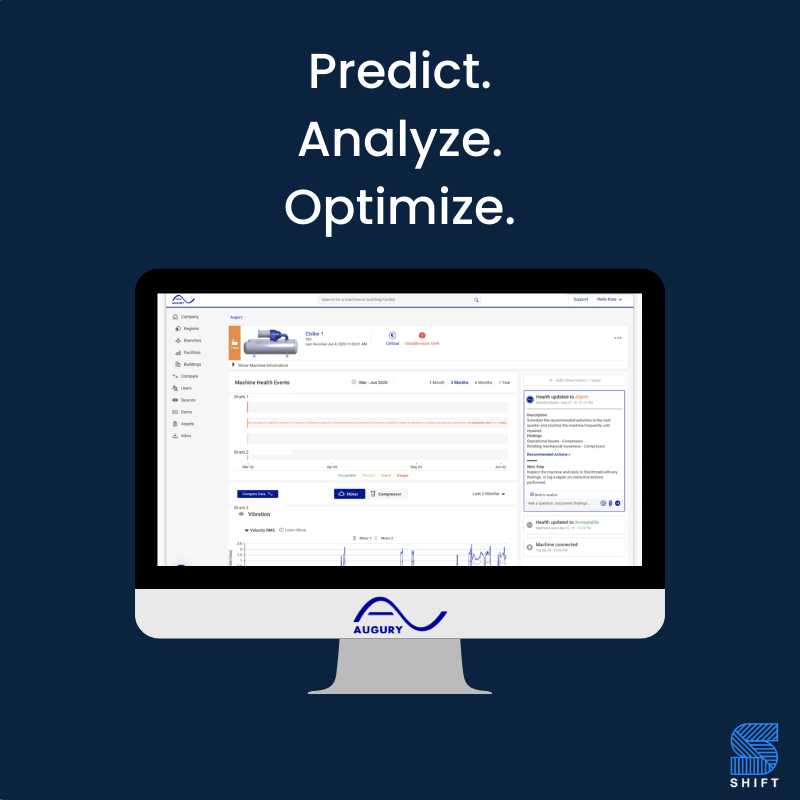
One way is predictive maintenance. AI can be used to predict when equipment will need maintenance, reducing downtime and repair costs. For example, the startup Augury provides an AI-powered predictive maintenance platform for industrial companies.
AI is also being used to optimize supply chain operations by reducing inventory costs and improving delivery times. For example, project44 offers an AI-powered platform for supply chain visibility and optimization.
How can AI help me drive a better customer experience?
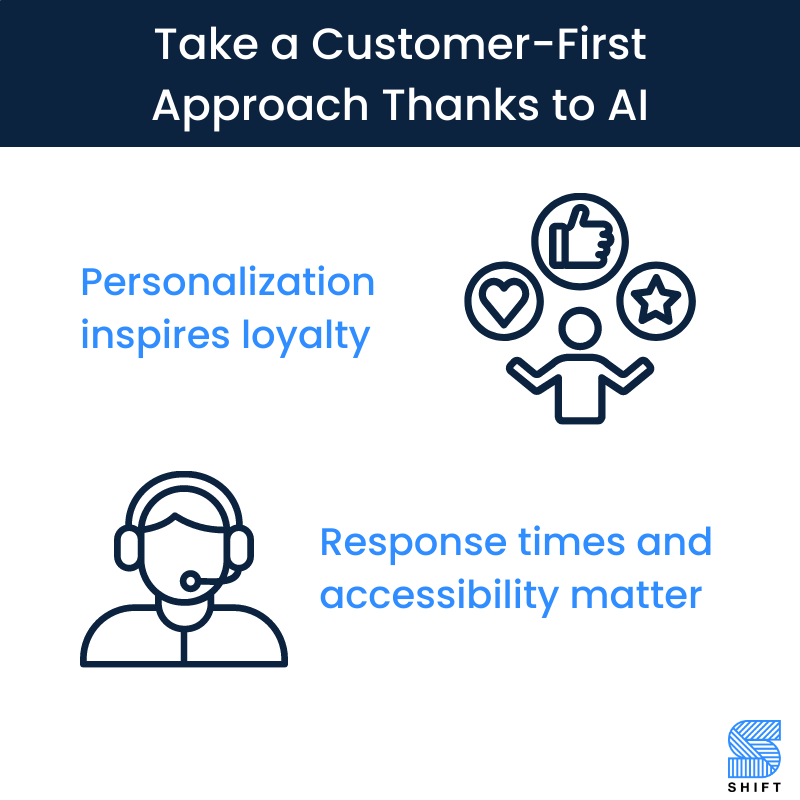
AI can personalize the customer experience, which can improve engagement and loyalty. For example, Dynamic Yield is an AI-powered personalization platform for e-commerce businesses.
AI chatbots can handle simple customer inquiries, improving response times and reducing customer service costs. For example, Tars integrates AI in its website and WhatsApp chatbot platform for businesses.
How can AI help me create marketing content?
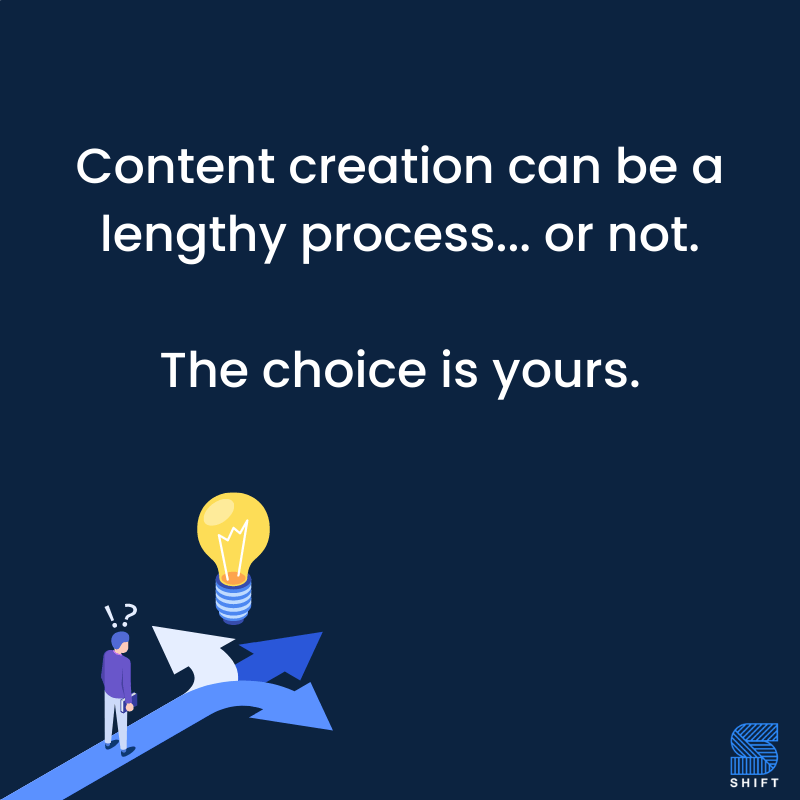
AI can be used to generate text, images, and videos, which reduces the need for manual content creation. For example, Copy.ai’s copywriting platform uses AI to quickly generates fantastic marketing content (like we did for this blog).
Many people use AI to curate content from multiple sources, reducing the need for manual research. For example, Curata is an AI-powered content curation platform for businesses.
How can AI help me make better decisions for planning?
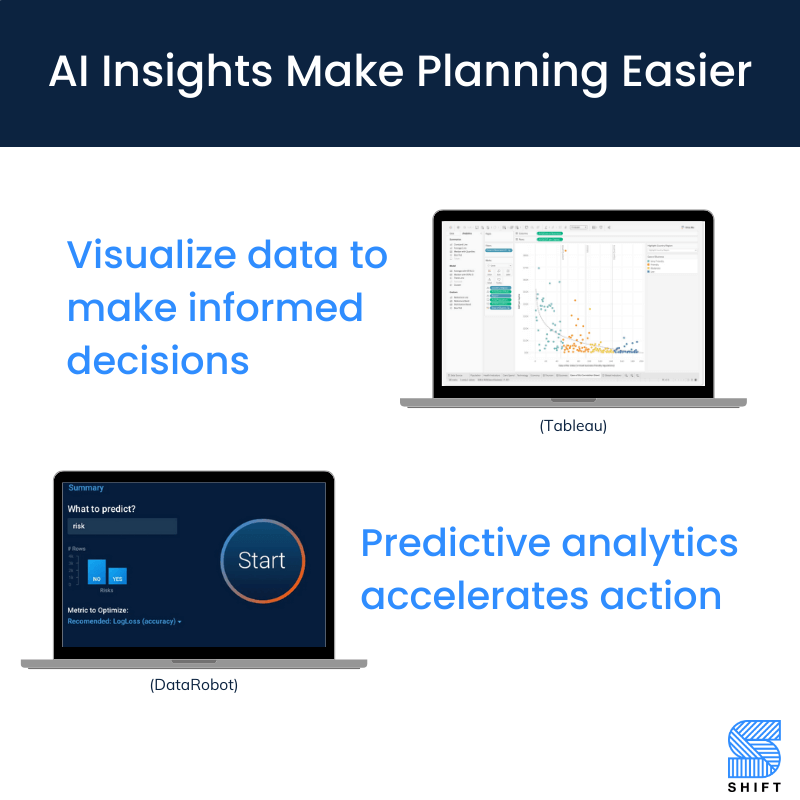
AI can analyze and visualize data, which makes it easier to identify trends and patterns. For example, Tableau is a widely-used AI-powered business intelligence and data visualization platform.
AI is capable of predicting customer behavior and preferences, which can inform marketing, product development, and pricing decisions. For example, DataRobot is an AI-powered predictive analytics platform for businesses.
How can AI help me be even more competitive in the marketplace?

Looking to analyze competitor data? AI is capable of identifying strengths and weaknesses that can inform business strategy. For example, Crayon’s AI-powered competitor analysis platform helps optimize and manage client businesses.
AI can be used to optimize pricing, which helps businesses stay competitive while maximizing profit margins. For example, Revionics’ price optimization platform enables retailers to find pricing clarity, understand data, and enhance strategy.
What are a few of the AI-powered platforms that we use at SHIFT?
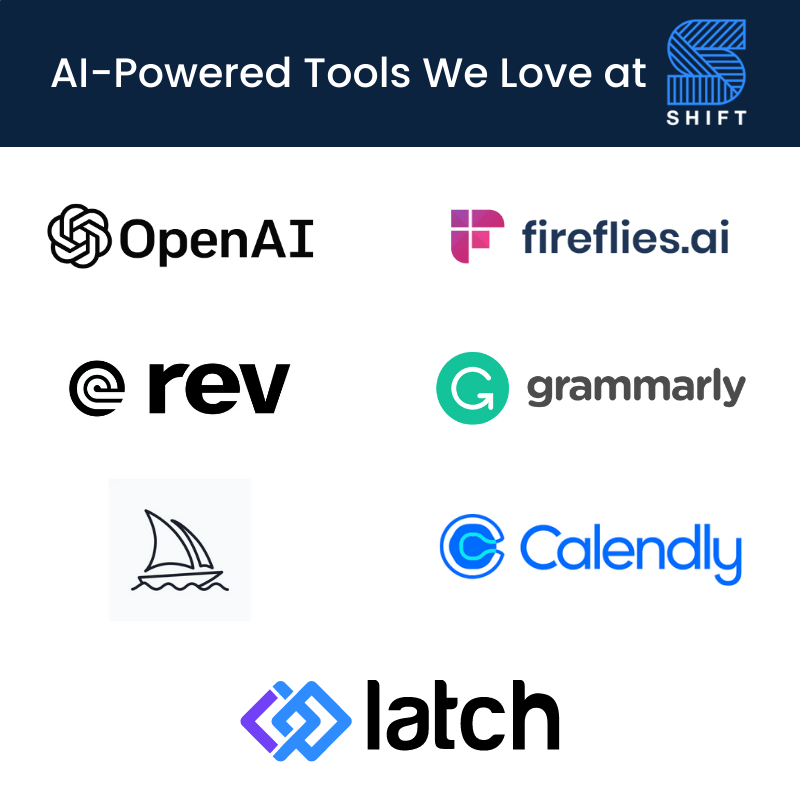
Our SHIFT team uses AI in a variety of ways to improve our productivity, efficiency, and customer experience. For example, we use OpenAI to assist with marketing materials, such as email campaigns, landing pages, and social media posts. This not only saves us time and effort but also helps us maintain a consistent brand voice across all channels.
We also use Fireflies.ai for notetaking during meetings and presentations. Fireflies.ai leverages natural language processing to transcribe audio and video recordings into text, which can be searched and shared easily. This allows us to efficiently capture and organize important information, share it with team members, and refer back to it later.
Rev is another valuable AI tool we use to transcribe audio and video recordings. Rev offers accurate and affordable transcriptions in a variety of languages, which saves us time and effort in manually transcribing recordings ourselves. This is particularly helpful for interviews, focus groups, and other research activities where we need to capture a lot of information quickly and accurately.
We use Grammarly to improve our writing. Grammarly’s AI uses natural language processing and machine learning algorithms to analyze and improve the clarity, tone, and grammar of our writing. This helps us to write more effectively and professionally, which is particularly important for our client-facing materials.
MidJourney helps us create compelling images for our marketing materials. MidJourney uses AI to generate high-quality images based on text inputs, which allows us to create unique and eye-catching visuals quickly and easily.

Calendly uses AI to assist with scheduling. It uses natural language processing (NLP) algorithms to understand and interpret the content of the user's calendar, email messages, and other data sources to suggest available meeting times and automate scheduling.
Calendly's AI algorithms can also optimize scheduling based on factors such as meeting duration, time zone differences, and user preferences. Additionally, Calendly uses machine learning algorithms to improve its suggestions over time based on user feedback and usage patterns.
For general queries, we rely on ChatGPT. ChatGPT is a conversational AI model developed by OpenAI that can answer questions and provide information on a wide range of topics. This helps us save time and effort in researching information and allows us to focus on more important tasks.
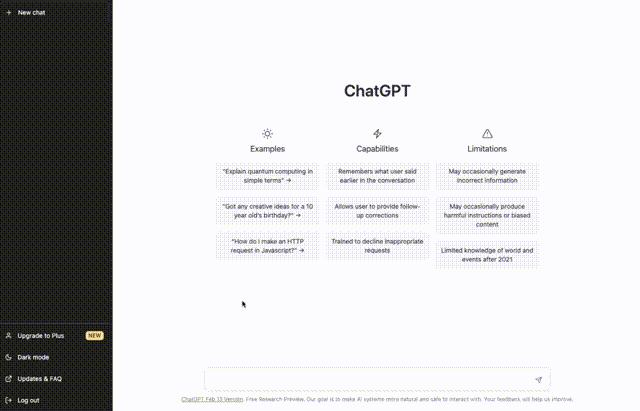
Finally, we use Latch to measure employee alignment and sentiment. Latch uses AI to analyze employee feedback and identify trends and patterns in employee engagement, satisfaction, and sentiment. This allows us to take proactive steps to address any issues and improve our workplace culture and productivity.
What will you do next?
There are many other AI solutions available for different business needs. It's important to assess your specific business requirements and research the available options to find the best AI solution for you.
The key is to identify the areas where AI can have the most impact and invest in the right tools and applications. It's also important to prioritize ethical and responsible AI practices and stay informed about the latest developments in AI technology and regulation.
AI is not just a buzzword or passing trend. It's a transformative technology that can help organizations become more competitive, efficient, and innovative. By embracing AI and staying ahead of the curve, you can unlock new opportunities and differentiate yourself in the market.
So, what are you waiting for? It's time to embrace your Ironman moment and see what Jarvis can do for your business.

Additional Resources:







